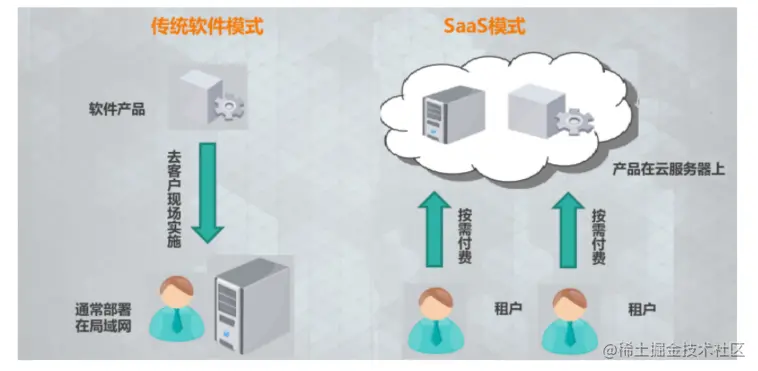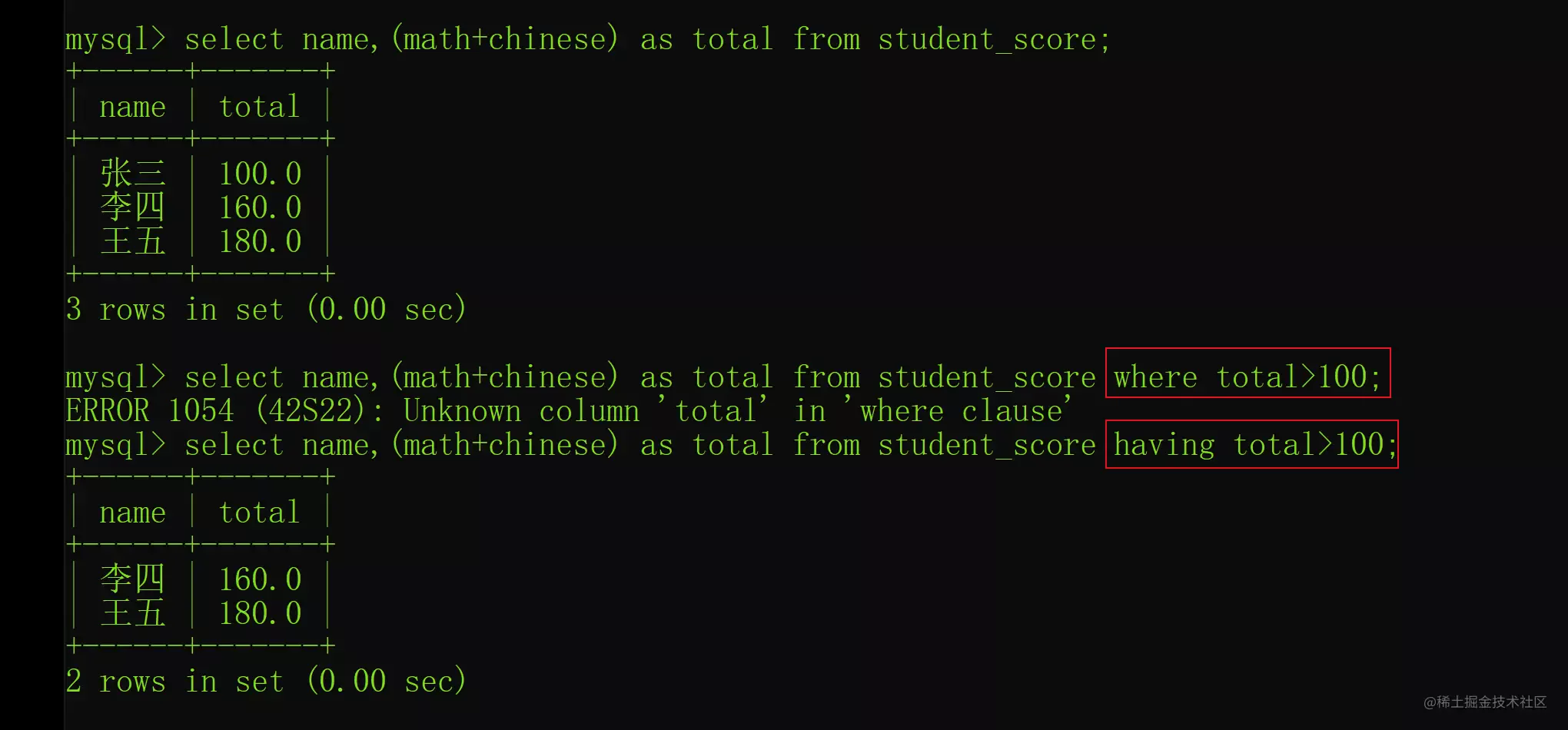当前位置:网站首页>Cmake tutorial Step2 (add Library)
Cmake tutorial Step2 (add Library)
2022-07-05 17:45:00 【It's beginning to boil】
CMake Official documents
Refer to the official cmake3.24 Course translation
https://cmake.org/cmake/help/v3.24/guide/tutorial/index.html
https://gitlab.kitware.com/cmake/cmake/-/tree/master/Help/guide/tutorial
step2
https://cmake.org/cmake/help/v3.24/guide/tutorial/Adding%20a%20Library.html
My warehouse :
https://github.com/FRBoiling/cmake-tutorial.git
Add a library
Now? , We will add a library to the project . This library will contain our own implementation of calculating the square root of numbers . then , Executable files can use this library , Instead of the standard square root function provided by the compiler .
In this tutorial , We will put the library into a file named MathFunctions In the subdirectory of . This directory contains a header file MathFunctions.h And a source file mysqrt.cxx. The source file has a name mysqrt Function of , It provides with the compiler sqrt Functions similar functions .
Add the following line CMakeLists.txt Add files to MathFunctions Catalog :
Initialize the library
Go to the project folder Step2, Create subdirectories MathFunctions, This directory contains a header file MathFunctions.h、 A source file mysqrt.cxx And a CMakeLists.txt file
mkdir Step2 Step2_build
cd Step2
mkdir MathFunctions
cd MathFunctions
touch MathFunctions.h mysqrt.cxx CMakeLists.txt
MathFunctions.h The contents are as follows :
double mysqrt(double x);
mysqrt.cxx The contents in are as follows :
#include <iostream>
// a hack square root calculation using simple operations
double mysqrt(double x)
{
if (x <= 0) {
return 0;
}
double result = x;
// do ten iterations
for (int i = 0; i < 10; ++i) {
if (result <= 0) {
result = 0.1;
}
double delta = x - (result * result);
result = result + 0.5 * delta / result;
std::cout << "Computing sqrt of " << x << " to be " << result << std::endl;
}
return result;
}
CMakeLists.txt The contents are as follows
add_library(MathFunctions mysqrt.cxx)
Project reference library
The project structure is as follows :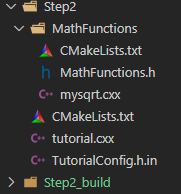
In order to use the new library , We will be in the top-level directory (Step2)CMakeLists.txt Add a add_subdirectory() call , In order to build a library . We add the new library to the executable , And add MathFunctions As include Catalog , So that you can find MathFunctions.h The header file . top CMakeLists.txt The last few lines of the file should now look like this :
# add the MathFunctions library
add_subdirectory(MathFunctions)
# add the executable
add_executable(Tutorial tutorial.cxx)
target_link_libraries(Tutorial PUBLIC MathFunctions)
# add the binary tree to the search path for include files
# so that we will find TutorialConfig.h
target_include_directories(Tutorial PUBLIC
"${PROJECT_BINARY_DIR}"
"${PROJECT_SOURCE_DIR}/MathFunctions"
)
1.1、 Build optional options
Now? Let's go MathFunctions The library is set to optional . For this tutorial , There is really no need to do this , But for the Bigger projects Come on , This is a common situation . The first step is at the top CMakeLists.txt Add an option to the file .
option(USE_MYMATH "Use tutorial provided math implementation" ON)
# configure a header file to pass some of the CMake settings
# to the source code
configure_file(tutorial_config.h.in tutorial_config.h)
This option will be displayed in cmake-gui and ccmake in , The default value is ON, The user can change this value . This setting will be stored in the cache , In this way, users do not need to run on the build directory every time CMake This value is set when .
1.2、 Condition building and linking
next The change is to build and link MathFunctions The library is set to condition . So , We're going to create one if Statement to check the value of this option . stay if In block , Put it in the top add_subdirectory() Commands and some additional list commands , To store the information needed to link to the Library , And take the subdirectory as include Add the directory to the tutorial target . top CMakeLists.txt The end of the file now looks like this :
if(USE_MYMATH)
add_subdirectory(MathFunctions)
list(APPEND EXTRA_LIBS MathFunctions)
list(APPEND EXTRA_INCLUDES "${PROJECT_SOURCE_DIR}/MathFunctions")
endif()
# add the executable
add_executable(Tutorial tutorial.cxx)
target_link_libraries(Tutorial PUBLIC ${EXTRA_LIBS})
# add the binary tree to the search path for include files
# so that we will find TutorialConfig.h
target_include_directories(Tutorial PUBLIC
"${PROJECT_BINARY_DIR}"
${EXTRA_INCLUDES}
)
Be careful , Using variables EXTRA_LIBS Collect any optional libraries , So that you can link to the executable later . Again , Variable EXTRA_INCLUDES For optional header files . When dealing with many optional components , This is a classic method , We will introduce modern methods in the next step .
Use libraries in source code
The corresponding changes to the source code are quite simple . First ,tutorial.cxx It includes MathFunctions.h The header file :
#ifdef USE_MYMATH
include "MathFunctions.h"
#endif
then , In the same file , Use USE_MYMATH Controls which square root function to use :
#ifdef USE_MYMATH
const double outputValue = mysqrt(inputValue);
#else
const double outputValue = sqrt(inputValue);
#endif
Because the source code now needs USE_MYMATH, We can add it to TutorialConfig.h.in:
#cmakedefine USE_MYMATH
Tests and exercises
Final Step2/CMakeLists.txt The contents are as follows
cmake_minimum_required(VERSION 3.10)
# set the project name and version
project(Tutorial VERSION 1.0)
# specify the C++ standard
set(CMAKE_CXX_STANDARD 11)
set(CMAKE_CXX_STANDARD_REQUIRED True)
# should we use our own math functions
option(USE_MYMATH "Use tutorial provided math implementation" ON)
# configure a header file to pass some of the CMake settings
# to the source code
configure_file(TutorialConfig.h.in TutorialConfig.h)
# add the MathFunctions library
if(USE_MYMATH)
add_subdirectory(MathFunctions)
list(APPEND EXTRA_LIBS MathFunctions)
list(APPEND EXTRA_INCLUDES "${PROJECT_SOURCE_DIR}/MathFunctions")
endif()
# add the executable
add_executable(Tutorial tutorial.cxx)
target_link_libraries(Tutorial PUBLIC ${EXTRA_LIBS})
# add the binary tree to the search path for include files
# so that we will find TutorialConfig.h
target_include_directories(Tutorial PUBLIC
"${PROJECT_BINARY_DIR}"
${EXTRA_INCLUDES}
)
tutorial.cxx The contents are as follows
#include <stdio.h>
#include <stdlib.h>
#include <math.h>
#include <iostream>
#include "tutorial_config.h"
#ifdef USE_MYMATH
#include "math_functions.h"
#endif
int main(int argc, char *argv[])
{
// if(argc<2){
// fprintf(stdout, "Uage: %s number\n", argv[0]);
// return 1;
// }
if (argc < 2)
{
// report version
std::cout << argv[0] << " Version " << Tutorial_VERSION_MAJOR << "."
<< Tutorial_VERSION_MINOR << std::endl;
std::cout << "Usage: " << argv[0] << " number" << std::endl;
return 1;
}
// double inputValue = atof(argv[1]);
const double inputValue = std::stod(argv[1]);
#ifdef USE_MYMATH
const double outputValue = mysqrt(inputValue);
#else
const double outputValue = sqrt(inputValue);
#endif
fprintf(stdout, "The square root of %g is %g\n", inputValue, outputValue);
return 0;
}
practice
1、Why is it important that we configure tutorial_config.h.in after the option for USE_MYMATH?
2、What would happen if we inverted the two?
function cmake Executable or cmake-gui To configure the project , Then build it using the build tool of your choice . Then run the built Tutorial Executable file .
test
Now let's update USE_MYMATH Value .
The simplest way is to use it in the terminal cmake-gui or ccmake.
You can also modify this option from the command line , as follows
cmake …/Step2 -DUSE_MYMATH=ON
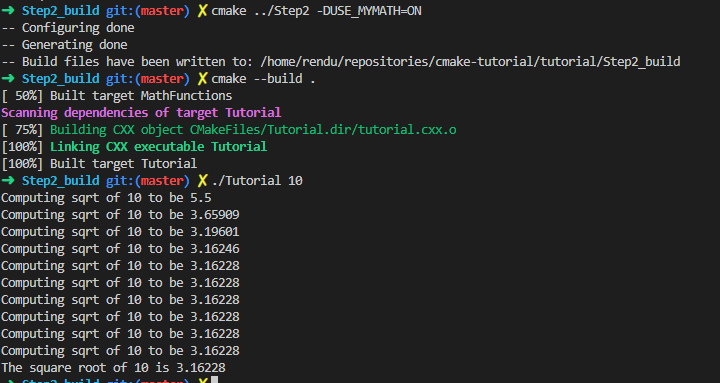
cmake …/Step2 -DUSE_MYMATH=OFF

Rebuild and run this tutorial again .
Which function gives a better result ,sqrt still mysqrt?
边栏推荐
猜你喜欢
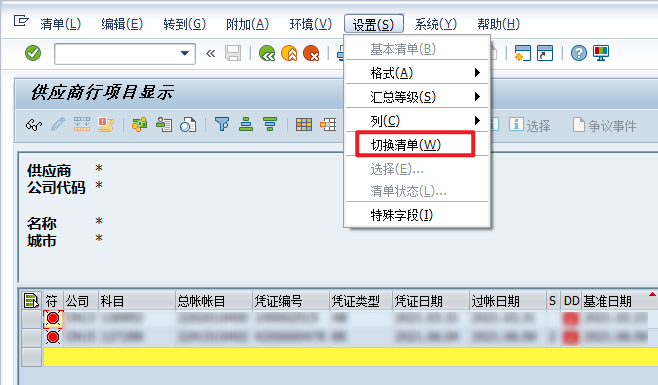
VBA驱动SAP GUI实现办公自动化(二):判断元素是否存在

VBA drives SAP GUI to realize office automation (II): judge whether elements exist
Database design in multi tenant mode

統計php程序運行時間及設置PHP最長運行時間
What are the precautions for MySQL group by

提高应用程序性能的7个DevOps实践

2022新版PMP考试有哪些变化?
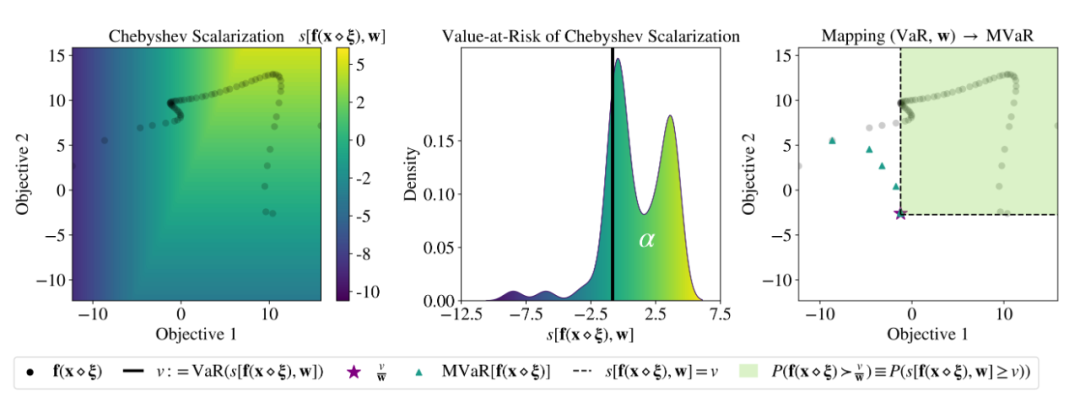
ICML 2022 | Meta propose une méthode robuste d'optimisation bayésienne Multi - objectifs pour faire face efficacement au bruit d'entrée

leetcode每日一题:字符串中的第一个唯一字符
Oracle缩表空间的完整解决实例
随机推荐
得知女儿被猥亵,35岁男子将对方打至轻伤二级,法院作出不起诉决定
Size_t 是无符号的
Cartoon: looking for the best time to buy and sell stocks
Anaconda中配置PyTorch环境——win10系统(小白包会)
VBA drives SAP GUI to realize office automation (II): judge whether elements exist
北京内推 | 微软亚洲研究院机器学习组招聘NLP/语音合成等方向全职研究员
企业数字化发展中的六个安全陋习,每一个都很危险!
一口气读懂 IT发展史
CVPR 2022 best student paper: single image estimation object pose estimation in 3D space
证券网上开户安全吗?证券融资利率一般是多少?
Mysql5.6 parsing JSON strings (supporting complex nested formats)
Sentinel flow guard
Example tutorial of SQL deduplication
Ten top automation and orchestration tools
LeetCode每日一题:合并两个有序数组
Use QT designer interface class to create two interfaces, and switch from interface 1 to interface 2 by pressing the key
Cartoon: looking for the k-th element of an unordered array (Revised)
Cartoon: how to multiply large integers? (next)
Ordinary programmers look at the code, and top programmers look at the trend
WebApp开发-Google官方教程
